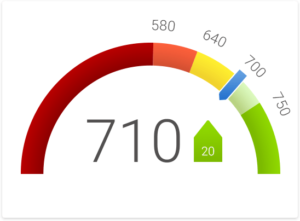 Today’s top story: 5 good times to shop for almost anything. Also in the news: How one woman ditched $36K of debt, how to nag new coworkers to save for retirement, and saving on airline booking fees by buying your ticket at the airport.
Today’s top story: 5 good times to shop for almost anything. Also in the news: How one woman ditched $36K of debt, how to nag new coworkers to save for retirement, and saving on airline booking fees by buying your ticket at the airport.
5 Good Times to Shop for Almost Anything
Spend a holiday weekend shopping.
How I Ditched Debt: ‘I Just Pretended I Didn’t Have Money’
How one woman paid off $36K of debt.
How to Nag New Coworkers to Save for Retirement
The good kind of nagging.
Save on Airline Booking Fees by Buying Your Ticket at the Airport
The savings can add up when booking a family trip.
 Today’s top story: The average credit score is rising. Also in the news: 3 money-saving tips for buying a washer, a statute of limitations on student loans, and why you should always buy airfare on a credit card.
Today’s top story: The average credit score is rising. Also in the news: 3 money-saving tips for buying a washer, a statute of limitations on student loans, and why you should always buy airfare on a credit card. Today’s top story: Why you should ask your parents about their financial plans. Also in the news: Why you no longer need a chip-and-PIN card overseas, earning and burning your airline rewards to maximize free flights, and 1 in 4 millennials raiding 401(k)s early to pay down debt.
Today’s top story: Why you should ask your parents about their financial plans. Also in the news: Why you no longer need a chip-and-PIN card overseas, earning and burning your airline rewards to maximize free flights, and 1 in 4 millennials raiding 401(k)s early to pay down debt.  Today’s top story: A beginner’s guide to budget travel. Also in the news: Get up to 75% off Spirit Airlines round-trip flights, 10 tips for family budget travel, and questions to ask before taking a tax refund advance.
Today’s top story: A beginner’s guide to budget travel. Also in the news: Get up to 75% off Spirit Airlines round-trip flights, 10 tips for family budget travel, and questions to ask before taking a tax refund advance. Today’s top story: How to invest during a bear market. Also in the news: Saying goodbye to John Bogle, how to budget for a family trip to Disney, and questions to ask before taking a tax refund advance.
Today’s top story: How to invest during a bear market. Also in the news: Saying goodbye to John Bogle, how to budget for a family trip to Disney, and questions to ask before taking a tax refund advance.